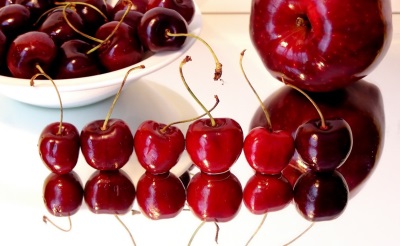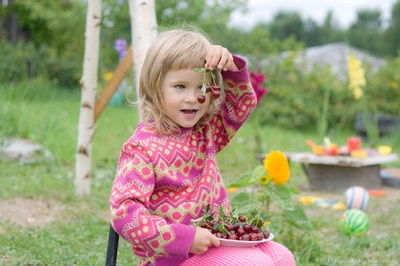At what age can you give a child a cherry?
In the season of berries and fruits so want to treat the crumbs useful delicacy, for example, juicy cherries. But is it possible to give it at the age of up to a year, how can its fruits be dangerous and how to correctly introduce a crumbs to cherries?
Benefit
- Supplements the diet with carotene, folic acid, tocopherol, vitamins C, B1, PP and B2.
- The pulp of this berry is rich in micro and macro elements, including a lot of zinc, copper, manganese, molybdenum, fluorine, iodine, iron, potassium and cobalt.
- Due to the presence of pectin substances, the use of such berries contributes to the elimination of nitrogenous compounds and other harmful substances.
- Contains a lot of organic acids that are important for the work of a child's body.
- There is the ability to strengthen the myocardium and positively affect the capillaries and blood composition, reducing the risk of thrombosis.
- Cherries are known as natural antibiotics.
- Although it is red, it rarely causes an allergic reaction.
Minuses
- Not recommended when gastroenteritis, peptic ulcer or loose stools.
- This berry should not be consumed in diabetes.
- Excessive use has a negative effect on tooth enamel.
- In the bones there are hazardous substances, so parents need to give the kids berries without stones.
About the benefits and dangers, see the program "To live healthy."
From what age can you put in complementary foods?
Fresh cherries are advised to give to kids older than a year, and the juice from this berry can be entered into the baby’s menu from 10 months.
In what form to give?
First, the child is introduced to the cherry in the form of juice, adding it to the juices of already tried fruits and berries.
One year old baby is offered fresh fruit. They are carefully washed and divided into halves. If desired, cherries can be scalded and peeled off.
Children over 1.5-2 years old are also given it as part of various dishes - pies, salads, dumplings, muffins, cocktails and others.
How to enter into the diet?
The first portion of the cherry that the child tries should be tiny, for example, half of one berry. She is given for breakfast and, until the end of the day, they observe whether any signs of intolerance have appeared.
If the crumb feels good, its amount in the daily menu can be gradually increased to 40-50 grams, and to children over three years old - up to 100-150 grams.
Tips for choosing
When buying berries on the market, take an undeformed and dry cherry for your child, which does not have mold or stains. It should be ripe, since it does not ripen after harvest. It is best to buy cherries with fruit stems.
If you want to buy a frozen product, make sure that the bag inside it is crumbly. If you find berries in a bag that are blinded in one bundle, do not buy them, as they are frozen again.
What happens if a child swallows a bone?
The danger of cherry pits is the content of substances that can cause poisoning, so it is best to give children purified berries. At the same time, only a large number of pits are dangerous, which can also cause obstruction or constipation.
If the baby swallowed one or two bones, problems should arise. They will soon come out of his body with feces.
What to do if you are allergic?
If a rash, itching and other manifestations of an allergic reaction occur, cherries are excluded from the child’s diet for at least 1-2 months. If the retest is also allergic, the introduction to the menu of the child is delayed until the age of 3 years or older.





























































